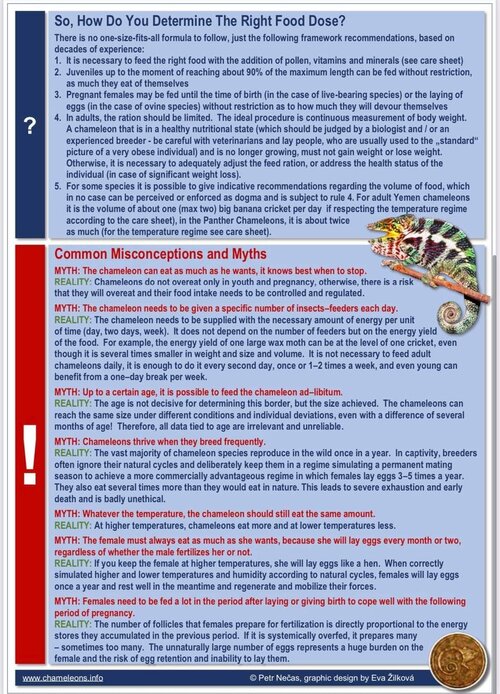I'm not bashing the practice but I would like to know what it is based upon? I get that on windy or rainy days chameleons may not have the opportunity to hunt or find prey. They probably don't always eat every day. I would suspect that they eat every nice day that they can. They probably binge when the opportunity presents itself in case of leaner times as many other species are known to do. They spend their time, I'd guess, patrolling their territory, searching for or avoiding mates, driving away the competition and dodging predators not just eating and basking. I doubt they pass up many meals that present themselves.
I realize that in captivity they will quickly eat themselves into obesity and it's our jobs to regulate how much we feed. Does an every other day schedule do this or is it just about limiting the number of bugs per week?
I'm interested in your thoughts but really want some science based information more.
Full disclosure. I feed almost every day but only half what I would feed if I skipped days.
I realize that in captivity they will quickly eat themselves into obesity and it's our jobs to regulate how much we feed. Does an every other day schedule do this or is it just about limiting the number of bugs per week?
I'm interested in your thoughts but really want some science based information more.
Full disclosure. I feed almost every day but only half what I would feed if I skipped days.











